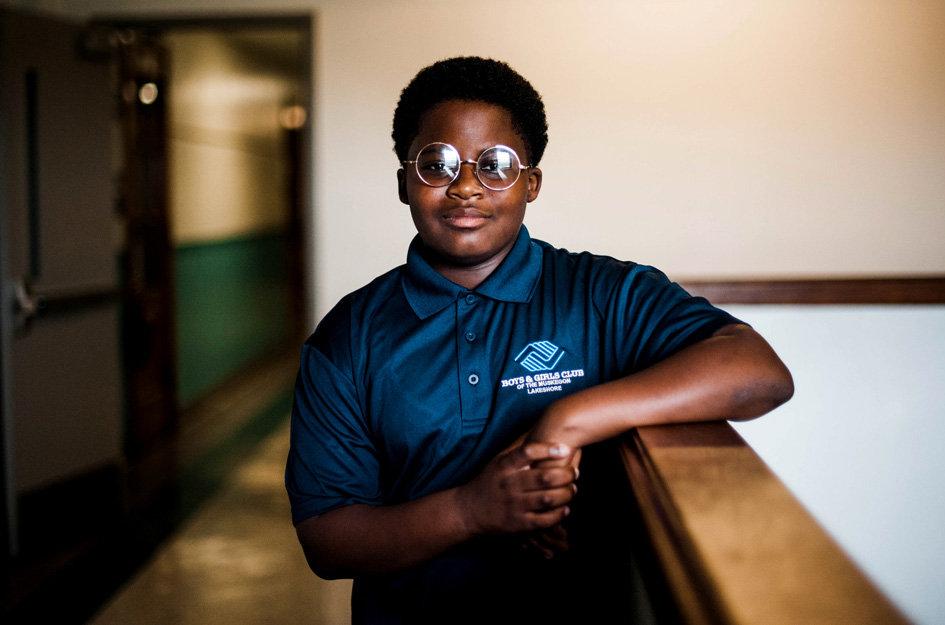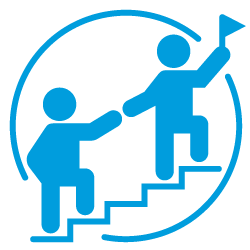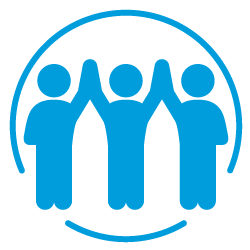
Raising a Leader: 10 Leadership Skills for Kids to Develop
In an era when everyone is an influencer, what truly defines a leader?
While influence informs behaviors and decisions, leadership is the big picture that puts it all together: from establishing a shared vision to empowering people to creating change.
Many successful leaders attribute their leadership skills to positive childhood experiences. From watching a coach rally their team before a big game to a classmate helping their peers study for a math test, kids learn early on how to recognize the qualities that make a great leader:
- Having the ability to energize a team
- Making everyone feel included
- Creating shared goals that everyone can contribute to
- Being open to new ideas and willing to speak up for a group
- Motivating a team through rough times and celebrating good times
Teaching leadership to kids gives them a better understanding of why leaders are important so they can start building the skills to become one themselves.
Benefits of Leadership for Kids
Some children want to become the President of the United States, but not all children want to be traditional leaders. Leaders face certain pressures, from being in charge to speaking in public.
With that said, ALL kids can benefit from learning leadership skills, which are transferable across many areas of growth and development.
Additionally, while not all young people aspire to be leaders, they may excel in certain aspects of leadership. For example, a student may be great at making others feel included in a group project or developing a plan to get it done on time.
Here are just some of the benefits of empowering youth to be leaders:
- Their self-confidence will grow.
Teaching kids leadership skills can boost their self-esteem and motivation to work hard at a goal or try new things. They’ll also strengthen their sense of control and self-identity. - They’ll learn to recognize their own needs and speak up.
Learning how to plan, problem solve and implement solutions allows youth to see what factors drive success. When they’re taught to believe their perspective matters, they’ll be more motivated to advocate for their personal needs as well as address school, Club and community issues. - They’ll build essential employability skills that lead to success in school and the workforce.
Practicing “soft skills” as a leader like communicating, collaborating and problem solving within a group will prepare kids for life after high school on their path to a career.

The Three Types of Leadership
When we think of a “leader” most of us imagine a history-maker, someone with prestige who created widespread change. But there are many leadership styles. The best leaders are self-aware, work well with others and have a vision of progress.
At Boys & Girls Clubs, we teach tweens and teens about leadership through programs that develop interpersonal skills and help youth recognize interests and issues they care about. With these skills, young people feel empowered to start afterschool clubs, become advocates and lead community projects.
Our premiere teen program, Youth of the Year, defines leadership in three levels:

Self-Leadership
Self-leadership involves self-awareness. Youth get to know themselves, acknowledge their unique experiences and backgrounds as well as become aware of their emotions and personal values. The ultimate goal of self-leadership is emotional wellness, which involves recognizing, understanding and responding to your own emotional needs to gain an overall sense of positive well-being.

Leadership with Others
Leadership with others includes understanding the perspectives of others and communicating effectively to encourage collaboration within and between teams.

Leadership in Community
Community can mean many things, such as home, school, the Club or other afterschool programs. This level of leadership includes taking positive actions toward a common goal.
Working on any of these leadership styles will help youth build their skills. When they’ve mastered all three, they’ll be ready to take on major leadership roles, from supporting community initiatives to starting their own clubs, businesses and more.

Leadership Skills for Kids to Develop
Leadership activities for students work best when kids know what skills they’re developing. We’re breaking down four skills that support young people’s development at any age, as well as sharing a full list of the most important leadership skills for kids to learn.

Self-awareness
In self-leadership, you must know who you are, what you feel and how you present yourself in a room. To build self-awareness, young people need to understand their emotions and how they influence their moods and behaviors. To do this, families and classrooms can practice daily emotional check-in’s where youth identify how they’re feeling. From there, youth can build coping skills to manage stress, sadness, over-excitement and other big feelings.
Parents, teachers and mentors can use these prompts to understand how youth see themselves:
- What do they contribute during a group project? (Could be tangible skills, like notetaking or making a plan, or social skills like being a good communicator or listener.)
- How do they respond when they experience stress?
- When they don’t like someone’s idea in a group, what do they do about it?
- Of their peers, who is their role model for a great leader? Why?
- Do they consider themselves to be a leader? In leadership, what are their strengths and weaknesses?

Responsibility
Being responsible is an important quality for youth to strive toward and it’s absolutely essential in a leader. Someone who is responsible is trusted to do what is right or the things that are expected or required — without being asked. Kids can practice this critical leadership skill at home, school or at their Boys & Girls Club by taking on tasks that they “own” and showing their accountability as they complete them. Building responsibility also requires giving kids plenty of opportunities to be independent; read our tips for teaching a child responsibility.

Listening
A good leader isn’t the loudest person in the room — they’re someone who listens to the perspectives of everyone. Active listening is a skill anyone can learn, and a powerful tool in kids’ leadership toolbox.
Here are three tips to teach youth how to actively listen:
- As the listener, kids should pay attention — this means practicing not interrupting and engaging the speaker through eye contact.
- Active listening is all about understanding someone else’s perspective. If kids don’t understand what someone is saying right away, they should practice saying something like, “Hey, would you say that differently? I don’t understand.”
- After the speaker shares, kids should summarize what they heard back to the speaker. Are there any gaps? Did the speaker feel heard and understood?

Inclusion
When people feel included, seen and valued, they’re empowered to be an active teammate and do great work. Effective leaders know the value of including others, from fresh ideas to creating team camaraderie. Unfortunately, school settings are where most people first experience feeling left out; most kids have experienced not being selected for an activity or isolated from a friend group. The good news is this experience can build their empathy to ensure other kids don’t feel this way.
Here are some ways youth can practice empathy and inclusion:
- To encourage diverse voices that may be hesitant to speak up, kids can practice asking in group settings, “Does anyone else have any other ideas?” or “[Name], I saw you did something cool with this. Can you share with us?”
- Put that active listening skill to work and learn more about peers who are feeling left out and why. Is there an activity they can be invited to join or a role for them to play?
- Students can also work with their schools to create their own clubs that focus on inclusion. After realizing how complicated the road to self-discovery can be, Club teen Janiyah created an inclusion and empowerment club at her school to give everyone a place to be themselves.
In addition to the above, some great leadership qualities for kids to practice include:
- Identifying and solving problems
- Collaboration
- Communication
- Self-advocacy
- Time management
- Goal-setting
Every young person has the potential to be a great leader when they work on skills to lead themselves, lead others and lead the community. When young people feel empowered, they’re more likely to take on leadership roles and be the change they want to see.
Helping Today’s Kids Become Tomorrow’s Leaders
Boys & Girls Clubs of America provides safe spaces, supportive mentors and programs that help young people succeed. Our leadership programs empower kids and teens to gain self-awareness and confidence and speak up about things they care about. Help support the great futures of America’s youth: